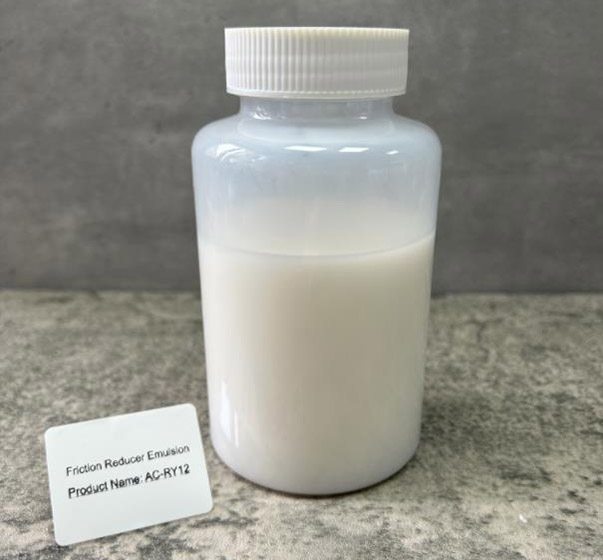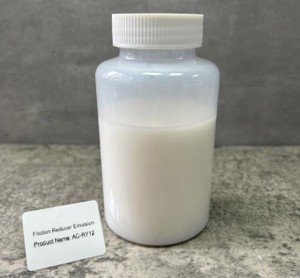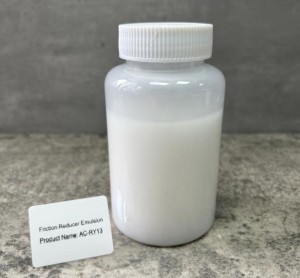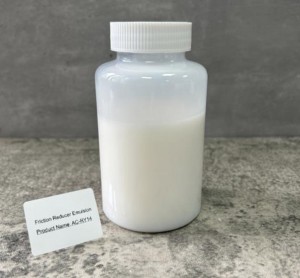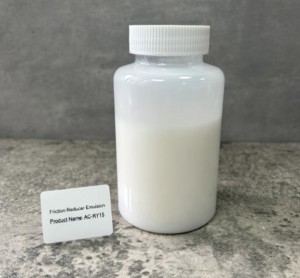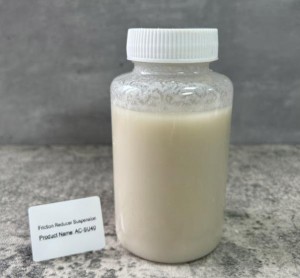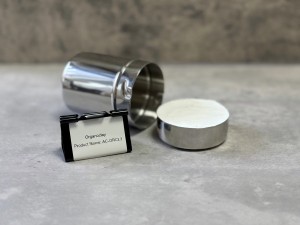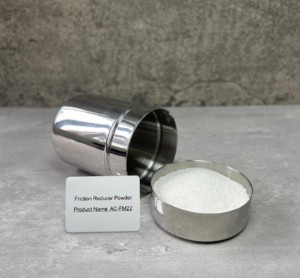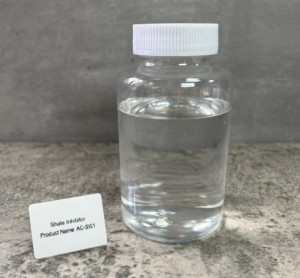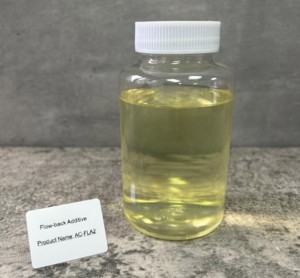Friction Reducer Emulsion AC-RY series
Product Detail:
Friction reducer emulsion has fast dissolution speed, fast dissolution is not easy to form fish eyes, simple preparation, and is suitable for on-site direct preparation. It has been used as the main friction reducer in slick-water hydraulic fracturing fluid system due to its high molecular weight and good drag reduction performance. Friction reducer emulsions AC-RY series are prepared via inverse emulsion polymerization . The monomer that is easily soluble in water is used as the dispersion phase, and non-polar hydrocarbon substances are used as the continuous phase. Under the action of lipophilic emulsifiers, water in oil droplets or emulsion systems are formed. The friction reducer prepared by this method exhibits rapid phase transition under low temperature conventional water quality conditions. While also possessing certain advantages such as salt resistance and easy degradation, with a better friction reduction effect compared to conventional emulsion friction reducers.
Features:
Low dosage, fast dissolution rate, high viscosity, and friction reduction rate greater than 70%.
High viscosity, low friction, good sand suspension ability, low filtration loss, good viscosity stability, less residue, convenient preparation, and low cost.
Excellent thickened sand carrying capacity, and the sand ratio fully meets the on-site requirements.
Application :
AC-RY series friction reducer emulsions are applicable for large-scale and continuous mixed volume fracturing.AC-RY series friction reducers should be selected considering the brine composition with the required friction reduction rate. The typical dosage can be 0.5% -1.5%.
Parameters:
|
Product Name |
Recommended Application |
|
AC-RY12 |
Fresh water to medium monovalent brine |
|
AC-RY13 |
Fresh water to medium monovalent brine |
|
AC-RY14 |
Medium monovalent brine to medium multivalent brine |
|
AC-RY15 |
Medium monovalent brine to high multivalent brine |
|
Item |
Typical Parameter |
|
Appearance |
White or light yellow lotion |
|
Solid Content,% |
≥30 |
|
pH |
5-8 |
|
Thickening time, min |
≤1 |
|
Temperature resistance and shear resistance(2%, 90°C), mPa.s |
≥65 |
|
Surface& Interfacial tension after gel breaking, mN/m |
Surface tension≤32 |
|
Interfacial tension≤2 |


